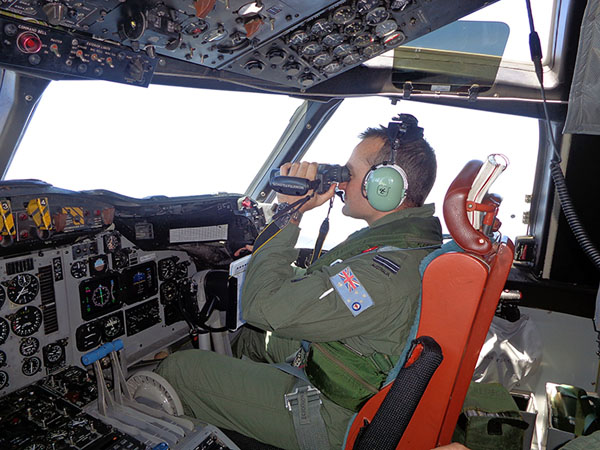| Latest news | China effort | Passengers stories | Timeline | Reporter's Log |
| Infographic | Mystery deepens | Airlines'?statement | Passport scam | Photos |
 |
|
A Royal Australian Air Force pilot of an AP-3C Orion maritime patrol aircraft scans the surface of the sea near the west of Peninsula Malaysia in this handout picture by the Royal Australian Air Force, released via the Australian government's Department of Defence website on March 17, 2014. [Photo/Agencies] |
|
 |
|
Passengers' and their nationalities: Chinese 154? |
KUALA LUMPUR - Investigators probing the disappearance of a Malaysia Airlines jetliner with 239 people on board believe it most likely flew into the southern Indian Ocean, a source close to the investigation said on Wednesday.
An unprecedented search for the Boeing 777-200ER is under way involving 26?parties in two vast search "corridors", one arcing north overland from Laos towards the Caspian Sea, the other curving south across the Indian Ocean from west of Indonesia to west of Australia.
"The working assumption is that it went south, and furthermore that it went to the southern end of that corridor," said the source, who spoke on condition of anonymity.
The view is based on the lack of any evidence from countries along the northern corridor that the plane crossed their airspace, and the failure to find any trace of wreckage in searches in the upper part of the southern corridor.
Malaysian and US officials believe the aircraft was deliberately diverted perhaps thousands of miles off course, but an exhaustive background search of the passengers and crew aboard has not yielded anything that might explain why.
Flight MH370 vanished from civilian air traffic control screens off Malaysia's east coast at 1:21 a.m. local time on March 8 (1721 GMT March 7), less than an hour after taking off from Kuala Lumpur for Beijing.
Investigators piecing together patchy data from military radar and satellites believe that someone turned off vital datalinks and turned west, re-crossing the Malay Peninsula and following a commercial route towards India.
After that, ephemeral pings picked up by one commercial satellite suggest the aircraft flew on for at least six hours, but it is not known for sure if it went north or south. The data from the satellite placed the plane somewhere in one of the two corridors when the final signal was sent at 8:11 am.
Last week, a source familiar with official US assessments said it was thought most likely the plane flew south, where it presumably would have run out of fuel and crashed into the sea.